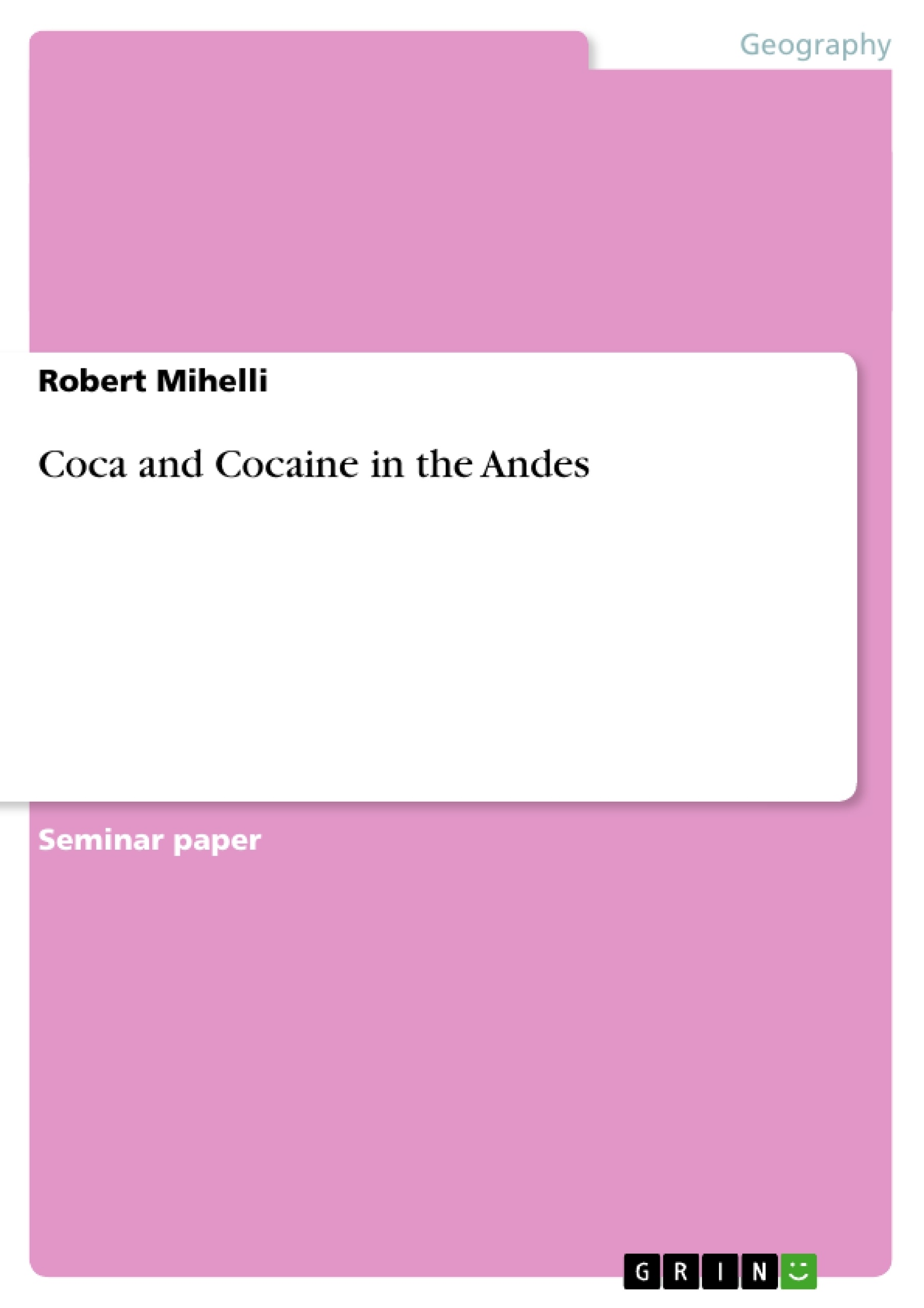Andean farmers have good financial reasons for continuing to grow coca, and it is unlikely that theeconomic equation can be substantially altered. Cocaine is as cheap and plentiful as ever on U.S.streets, the biggest market for cocaine; the State Department estimates that 1999 coca productionincreased. The current U.S. retail cocaine market is somewhere between $30 billion and $150 billion.
Efforts at interdiction and crop substitution have failed, the former because the amounts of cocaineimported are so large that seizures have little overall impact, the latter both because alternative cropsare intrinsically less lucrative and because there is no infrastructure to bring such crops to market. TheU.S. General Accounting Office report to Congress argued that crop substitution was unlikely tosucceed, and the U.S. Drug Enforcement Administration has calculated the cost of raw coca as makingup less than 1 percent of the retail cost of refined cocaine in the U.S. The latter statistic means thattraffickers could easily afford to increase what they pay for raw coca if a shortage occurred, therebystimulating production.
In order to explain why the andean Countries prefer to grow coca, it is important to understand that thecoca plant is a part of the culture, as history shows and there is a difference between the existence ofcoca and cocaine. The usage and the production of the coca plant changed in the last hundred years,and the monocultural development carry tremendous illegal capacities. But on the other hand, it isoriginally a cultural heritage. To explain this issue one must know where it is cultivated, why and whatproblems it causes for the Andean Countries, and not only for these countries, but on a globalscale.
Inhaltsverzeichnis (Table of Contents)
- Introduction
- The Coca Plant
- History
- Usage
- Production of Cocaine
- Cocaine Powder
- Cultivation
- Bolivia
- Peru
- A Global Problem
- Issues
- Solutions
- Conclusion
Zielsetzung und Themenschwerpunkte (Objectives and Key Themes)
This paper aims to provide an in-depth analysis of the coca plant and its impact on the Andes region, particularly focusing on its cultivation, production, and the resulting economic and social challenges. The paper examines the reasons behind the continued cultivation of coca despite its association with cocaine production, exploring the historical and cultural significance of the plant and its role in the region's economy.
- The cultural and economic significance of the coca plant in the Andes region
- The history of coca cultivation and its evolution into a major source of cocaine
- The impact of cocaine production on the Andes countries, including social, economic, and political challenges
- The global implications of the coca and cocaine trade
- The challenges and opportunities for addressing the issue of cocaine production in the region
Zusammenfassung der Kapitel (Chapter Summaries)
- Introduction: The introduction highlights the continued growth of coca production in the Andes region, despite efforts to combat it. It emphasizes the economic drivers behind coca cultivation and the difficulties in addressing the issue through interdiction and crop substitution.
- The Coca Plant: This chapter provides a detailed description of the coca plant, its varieties, and its cultivation practices. It explores the cultural significance of the plant in the Andes region, emphasizing its historical use and the distinction between coca and cocaine.
- History: This chapter focuses on the historical use of the coca plant, from its ancient origins in the Andes to its modern-day association with cocaine production. It examines the evolution of coca cultivation and its economic and social impact on the region.
- Usage: This chapter discusses the various uses of the coca plant, including its traditional use in chewing and its role in indigenous culture. It also explores the transition from traditional use to the production of cocaine.
- Production of Cocaine: This chapter explains the process of cocaine production from coca leaves, covering the different stages of processing and the technologies involved.
- Cocaine Powder: This chapter focuses on the finished product, cocaine powder, examining its distribution, market dynamics, and the role of organized crime.
- Cultivation: This chapter analyzes the cultivation of coca in the Andes region, focusing on the specific practices and challenges in Bolivia and Peru. It examines the economic and social factors that contribute to the persistence of coca production.
- A Global Problem: This chapter explores the global implications of coca and cocaine production, highlighting the international trade networks and the impact on various countries around the world.
- Issues: This chapter discusses the social, economic, and political challenges associated with cocaine production in the Andes region. It examines the impact on local communities, the role of corruption, and the challenges of law enforcement.
- Solutions: This chapter explores potential solutions to the problem of cocaine production, examining the effectiveness of different approaches, such as crop substitution, development programs, and international cooperation.
Schlüsselwörter (Keywords)
The key keywords and focus topics of this work include coca plant, cocaine production, Andes region, economic development, cultural significance, social impact, international trade, drug trafficking, poverty, corruption, and sustainable development.
- Arbeit zitieren
- Robert Mihelli (Autor:in), 2002, Coca and Cocaine in the Andes, München, GRIN Verlag, https://www.grin.com/document/19499



